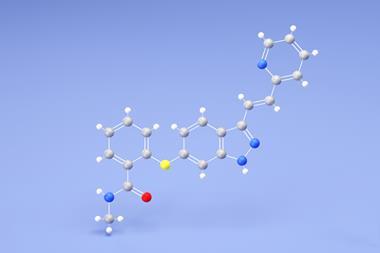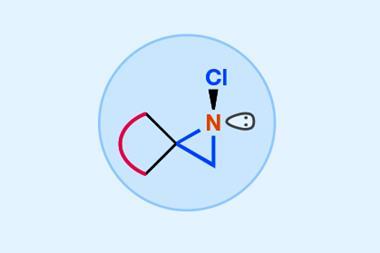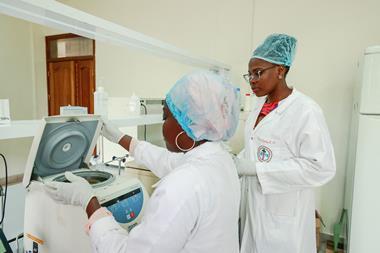Readers ponder polymorphs, period products, PFAS and more
Polymorph problems
I was interested in issues raised in your article ‘Crystal clear structure prediction’.
My PhD supervisor in the early 1960s refused to recognise the existence of amorphous solids. Organic compounds were either crystalline or liquids. I never failed to grow crystals of all of my compounds benefiting, no doubt, from them being small heterocycles clothed in groups such as amido, nitro, amino etc, which were conducive to the forging of intra- and inter-molecular bonds. My early publications were replete with descriptions of crystals as raphides, thick needles, glistening flakes and even parallelopipeds (brick-shaped crystals).
The article indicates that the sudden appearance (or disappearance?) of polymorphs can derail clinical programmes. Such an example occurred in the development of the anti-glioma drug temozolomide, originally synthesised by research student Robert Stone in the pharmacy department at Aston University, UK, in 1980.
We were aware of two polymorphs (malkazole and methazolastone) which had identical solution spectra (ultraviolet and nuclear magnetic resonance) but differed markedly in solid-state infrared spectra.
May & Baker, which co-funded the original work, abandoned the imidazotetrazine project in 1985 but synthesised a small clinical trial batch of temozolomide, which was hand-filled into capsules by Aston pharmacy postgrads for clinical trials starting in 1987 under the aegis of the (then) Cancer Research Campaign. As a result of some spectacular results in the phase 1 trials, the drug was licensed to Schering-Plough in 1992.
Schering-Plough was mortified to discover that there was no record of which polymorph had been used in the original batch for clinical trials. This could have been a major issue with a drug administered orally, with different polymorphs having different rates of absorption and distribution. As a result of this misfortune Schering-Plough repeated the entire temozolomide programme from scratch.
It wasn’t until 1999 that the drug was launched onto the market, some 19 years after its original synthesis.
Malcolm Stevens FRSC FRS
Arnside, Cumbria
The hidden chemicals in period products
Most people are surprised to learn that many commonly used menstrual products – pads, tampons, and liners – contain potentially harmful chemicals, including fragrance additives, pesticides such as glyphosate and substances linked to hormone disruption. What is even more concerning is that manufacturers are not always required to disclose the full list of ingredients.
People who menstruate use these products for several days every month, often for decades. Prolonged exposure to substances like phthalates, dioxin and glyphosate can pose serious health risks, including reproductive harm and an increased risk of certain cancers. Yet the conversation around menstrual health and product safety remains alarmingly quiet.
It’s time we shine a light on this issue. Consumers deserve full transparency and access to safe, non-toxic products. Manufacturers should be held accountable and regulators must establish clearer standards for ingredient disclosure and chemical safety in these products.
Menstrual health is not a niche issue – it’s a public health issue. Let’s end the silence and demand safer products for all.
Dave Evans FRSC
Wymondham, UK
Taking the ‘forever’ out of forever chemicals
February this year saw France make a historic environmental decision by passing a bill to ban per- and polyfluoroalkyl substances (PFAS); the so called ‘forever chemicals’ found in a diverse range of products from cookware to cosmetics (Chemistry World, April 2025, p9).
PFAS are a group of chemicals used for their non-stick and water-resistant properties. They are used in everyday items like non-stick frying pans, waterproof mascaras, stain-resistant clothing and packaging for takeaway food items. Due to their lengthy half-lives ‘long chain’ PFAS will not break down for decades and so, like microplastics, will only build up in the food chain until their use is prohibited.
French firms have been advised to begin phasing out the use of PFAS in their products to prepare for an outright ban in 2026 with water monitoring due to come into effect in 2030 which would incur a €100 (£85) tax per 100g of PFAS discharged.
Denmark announced its plan to ban the sale of PFAS‑treated consumer clothing and footwear by July 2026, while permitting their use in professional and safety attire where suitable alternatives are not yet widely available. PFAS from textiles account for around 60% of all PFAS emissions in the European Union, so it will require significant effort from the industry to phase out PFAS. Reducing PFAS exposure is challenging but not impossible.
Gerry Coughlan MRSC
Dublin, Ireland
Nitrogen isomer gives new shape to speculation
As a retired academic, I was very interested in the discovery of a new molecular nitrogen isomer, N6. I was surprised even more so that it was an ‘S’ shaped molecule!
Before the 1980s we knew of only graphite, diamond and amorphous carbon. Then a whole new area of carbon chemistry opened up (including buckminsterfullerenes and then graphene) of carbon isomers.
Now will the cyclic isomer N6 (equivalent to benzene without hydrogens) be found? Would it be stable? Would it have aromatic properties? If we do find it, then can we make a whole series of compounds equivalent to the polycyclic aromatic hydrocarbons, but without hydrogens?
Finally, could we make sheets of nitrogen in 2D arrays that would be between the fullerenes and graphene, but without aromaticity? Could they eventually form ball molecules? What was thought impossible 50 years ago with carbon became a reality. Could similar discoveries with nitrogen be made? Everything is speculation at present, but without speculation chemistry does not progress.
P Cadman FRSC
Aberystwyth, UK












No comments yet